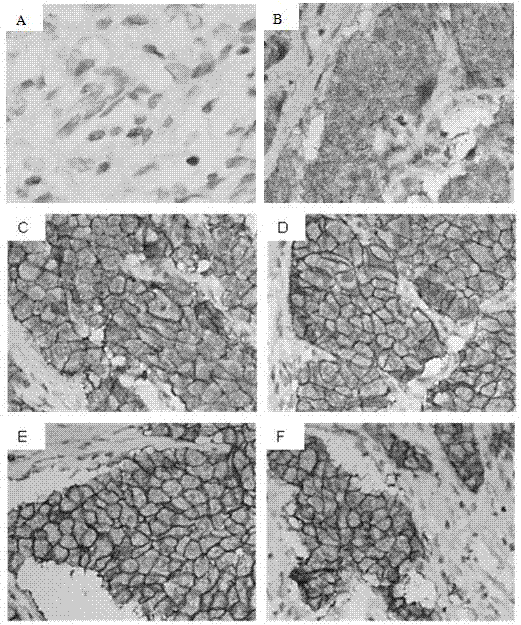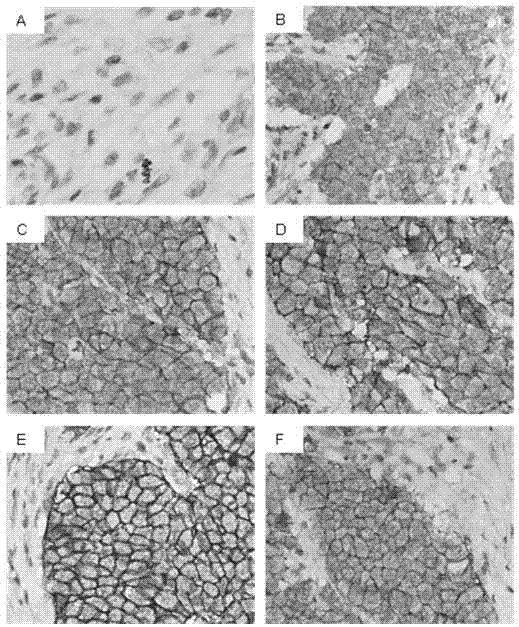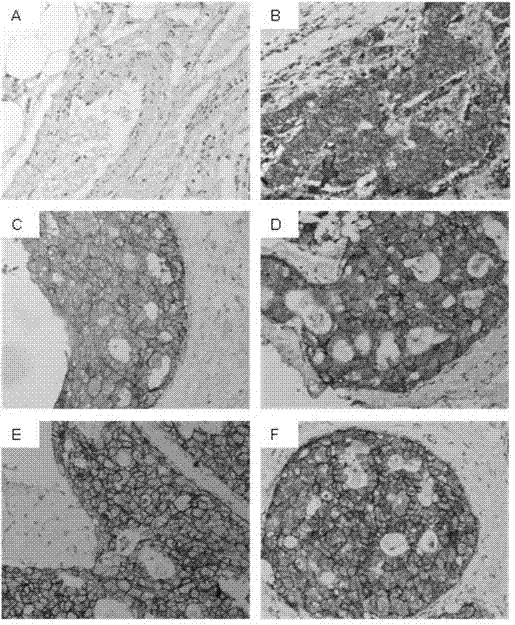Antigen pre-processing method for preparing antibody
A pretreatment and antigen technology, applied in the field of immunology, can solve the problems of poor specificity, inaccurate antibody positioning, lack of pertinence and purpose of antigen, and achieve the effect of low production cost and easy operation.
- Summary
- Abstract
- Description
- Claims
- Application Information
AI Technical Summary
Problems solved by technology
Method used
Image
Examples
Embodiment 1
[0020] Add 0.01 mol / L EDTA buffer solution with pH values of 7.0, 8.0, 9.0, and 10.0 to the antigen protein solution 1 (membrane protein), respectively, the final concentration of the antigen protein solution 1 is 1 mg / mL, and treat at 100°C for 20 minutes.
[0021] The mice were immunized with the antigen retrieval solution treated and untreated antigen protein respectively. After three times of immunization, the blood antibody titer was detected by ELISA, and the detection titer reached 10 6 , Dilute the antibody 1000 times with antibody diluent and perform immunohistochemical experiments ("Immunohistochemical Test Manual"). In this experiment, mice immunized with untreated antigen protein were used as negative control, and blank mice without immunization were used as blank control. The results of immunohistochemical staining were as figure 1 shown.
[0022] Depend on figure 1 It can be seen that the blank control in Figure A is the negative result of immunohistochemist...
Embodiment 2
[0024] Add 0.01 mol / L citrate buffer with pH values of 4.0, 5.0, 6.0, and 7.0 to the antigenic protein solution 2 (membrane protein) respectively, the final concentration of the antigenic protein is 1mg / mL, and treat at 120°C for 90s.
[0025] The mice were immunized with the antigen retrieval solution treated and untreated antigen protein respectively. After three times of immunization, the blood antibody titer was detected by ELISA, and the detection titer reached 10 6 , Dilute the antibody 1000 times with antibody diluent and perform immunohistochemical experiments. In this experiment, mice immunized with untreated antigen protein were used as negative control, and blank mice without immunization were used as blank control. The results of immunohistochemical staining were as figure 2 shown.
[0026] Depend on figure 2 It can be seen that the blank control in Figure A is the negative result of immunohistochemistry, and the immunohistochemical staining results of the n...
Embodiment 3
[0028] Add 0.01 mol / L Tris buffer with pH values of 6.0, 7.0, 8.0, and 9.0 to the antigenic protein solution 3 (membrane protein), and the final concentration of the antigenic protein solution 3 is 1 mg / mL, and treat at 100°C for 20 minutes.
[0029] The mice were immunized with the antigen retrieval solution treated and untreated antigen protein respectively. After three times of immunization, the blood antibody titer was detected by ELISA, and the detection titer reached 10 6 , Dilute the antibody 1000 times with antibody diluent and perform immunohistochemical experiments. In this experiment, mice immunized with untreated antigen protein were used as negative control, and blank mice without immunization were used as blank control. The results of immunohistochemical staining were as image 3 shown.
[0030] Depend on image 3 It can be seen that the blank control in Figure A is the negative result of immunohistochemistry, and the immunohistochemical staining results of ...
PUM
 Login to View More
Login to View More Abstract
Description
Claims
Application Information
 Login to View More
Login to View More - R&D
- Intellectual Property
- Life Sciences
- Materials
- Tech Scout
- Unparalleled Data Quality
- Higher Quality Content
- 60% Fewer Hallucinations
Browse by: Latest US Patents, China's latest patents, Technical Efficacy Thesaurus, Application Domain, Technology Topic, Popular Technical Reports.
© 2025 PatSnap. All rights reserved.Legal|Privacy policy|Modern Slavery Act Transparency Statement|Sitemap|About US| Contact US: help@patsnap.com



